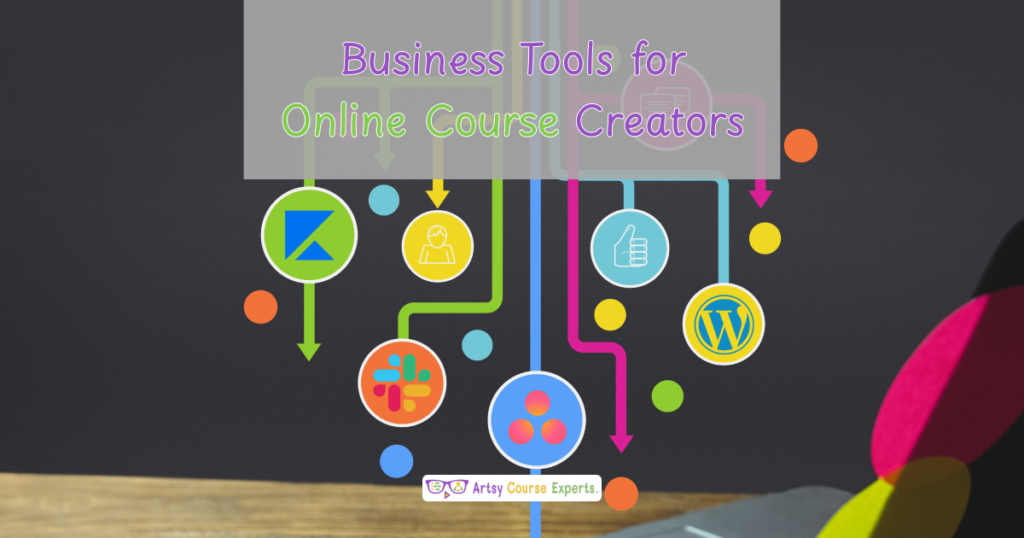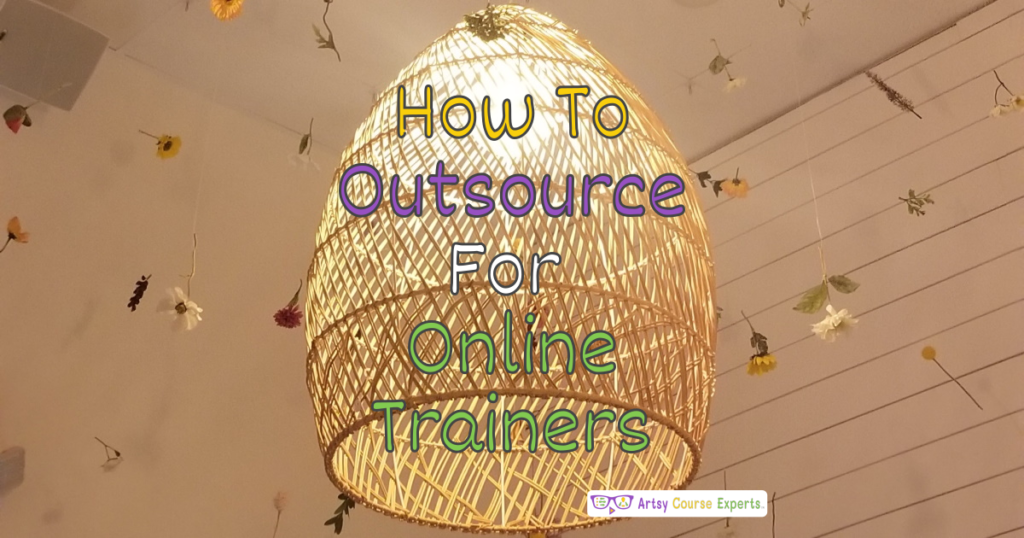This lesson will help online course teachers who aren’t familiar with microlearning learn how to teach skills using small digestible chunks per lesson.
Knowing about microlearning will help teachers that:
- Are not familiar with e-learning techniques
- Didn’t study education in college
- Teach students who don’t have time for long lessons
- Help students that have specific problems
- Have students learning on the road like using phone on a bus
In this article, we will review the benefits of microlearning strategies and go over some good tactics to teach one small chunk of content to creators.
Video Lesson – How To Teach With Microlearning
Microlearning Strategies For Creative Teachers
Stand Alone Or Build On Prior Lessons
Ideally, microlearning is stand alone where students can jump directly into the lesson they need.
When you are teaching a more complex topic, then it’s ok to teach it in small sequential steps that build on prior skills learned.
Either way, try to avoid A/V distractions and extra content beyond the lesson.
Teach One New Bite Sized Skill
Try not to cram two or more topics into one lesson.
Keep your lesson focused on learning just that one new skill.
Teaching a collection of things at once is hard for students to fully understand. This is especially true when they are slightly unrelated.
Keep Memory Requirements Low For The Lesson
Teachers should reduce the memory requirements for students.
You don’t want to require students to have to remember many different kinds of things at once.
Try to teach them one word, tool, action, or thing. Remember most people can only remember just a few things in working memory before they forget something you just told them 1 minute ago.
If the content is really simple then you can maybe teach a few new terms but if you spend a good amount of time on each item, it may be best to ultimately break the lesson into even smaller chunks.
Reduce The Cognitive Load
Teachers have to be careful to not stun their students with so many new concepts at the same time.
Remember that students won’t be fluent on topics for some time.
In the beginning, students will have to take mental pauses to digest new words, terms, and skills.
Students also have a lot of questions in their brain about how things are related to each other and it takes longer to fully understand multiple topics.
Support Quick Learning In A Few Minutes
Students are bound to get distracted in today’s world.
So keep your lessons short and to the point.
Avoid long 30 to 90 minute lessons that bore and lose students.
But short videos should still be focused and deliver hi-fidelity information.
Teachers should also get smart about their students. For example, you should know if your students are watching from home, while they practice, or on the go. This can help you fine tune the length of your lessons for your students.
Manage Student Limited Energy
In addition to attention span, students may simply not have the energy to fully digest a long lesson.
Learning can require a lot of focus and thinking, so keeping the chunk small will help with digesting a new topic.
When a student starts to get tired or confused in a longer lesson, it will snowball into not understanding later parts of the lesson.
A Microlearning Teaching Process To Creative Instructors
Let’s review how to think about the phases of microlearning and how you can teach creative students one specific chunk of knowledge.
Here are some sample microlessons:
- How to setup a new kitchen design layout work file
- How to load a new vector file for your metal cutting machine
- How to cut a gross grain ribbon for you fedora hat
- How to get feedback on your children’s book idea
- How to understand the clef symbol in sheet music
Hook
The first thing you’ll want to do is to hook your students. This means get them really interested in the topic.
Tell them about the goal of this lesson and what they’re going to learn. Give an example of what types of problems they are going to solve with this new skill that you’re going to teach them.
Instruct
Once students are leaning in and interested, you can start to teach them some stuff.
Try to teach your focused micro-lesson step by step. Go in sequential order and use a typical process flow.
Avoid any non-lesson distractions such as complex setup or alternative paths. Just focus on the one thing that you’re trying to teach them.
Demonstrate
Now that your students know the basics, start showing them a real life example.
You can use slides, photos, screenshares, or videos of you doing the thing that students want to learn.
You should definitely show an example of how you complete the most frequently occurring lesson goal. Use your best judgment to include the right amount of supporting details. Just like Goldilocks – not too much and not too little.
If you have time, you can do a few other examples that are slight variations of the skill. This will help students solve the most popular types of problems.
Review
After teaching and demonstrating, you’re going to summarize.
Think like your teaching on a TED talk. You hooked them, tell them what you’re gonna tell them, actually tell them the thing, then summarize what you just told them.
You’re going to want to review the key points and steps that you taught them.
Try not to drift into caveats or strange scenarios. If you need to, you can include a “decision tree”, like choose a color, but remember if you choose a dark color then you should do A, but if you choose a light color then do B.
Assessment
You may want to have some assessments after the lesson. It could be immediately after the lesson or at the end of the module.
The assessment will let students practice what they just learned.
Some example assessments could be:
- Create a vector flower made solely out of circles and ellipses
- Solder a necklace closure to the end of a custom jewelry chain
- Cut fabric on a cutting board using a blouse pattern
- Create the first stanzas of a poem
- Remove clicks and pops from a noisy audio track
Students could then send, share, or upload their assessment for feedback from the teacher and students.
In addition to having students practice, they could also take a quiz. The quiz could be simple multiple choice exam or could utilize matching, photos, fill in the blanks, puzzles, etc.
Closure
Finally, you’re going to wrap up the micro lesson.
This is a good time to tell them what we’re going to learn next. You may teach a new unrelated topic or build on this particular skill that you just taught.
Depending on how you’ve structured your courses, you may want to drive end-of-lesson questions into a teacher chat, email, social, or group discussion room.
Students could also be encouraged to share their work and discuss breakthroughs and challenges. This could setup the students for a future community where they also learn from their peers.
Some student questions could set them up for later modules or lead them to more advanced courses. This could be mentioned in the discussion or as a next steps module at the end of the course.
Don’t Forget To Use Feedback Loops To Improve Your Courses
After you learn what some of your students are struggling with – you should update your content, materials, and assessments.
Remember you don’t have to update everything at once. You can use student assessment results, questions, and surveys to prioritize what you improve first. You can update a part of one video or one sample project.
Over time, you should also utilize surveys, reviews, and ratings to see how student satisfaction goes up or where you have additional gaps.

Summary Of Using Microlearning To Teach Creatives
There are places for long lectures and tutorials, but there are also many situations where shorter and focused lessons work better.
When it makes sense, try to create easy-to-digest content by leveraging smaller microlearning techniques in your courses.
Here are some final tips for creating your lessons:
- Use a hook to get students interested in what you are about to teach
- Teach one small, specific, and useful skill in your lesson
- Demonstrate how to use the skill with the most popular needs
- Review and summarize the most important steps without all the details
- Let the students practice what they have just learned with assessments
- Give students a chance to ask questions
- Finally, show them the roadmap of how the current lesson connects to what is coming next
For more creative teacher help building, operating, and growing your online courses, check out our ArtsyCourseExperts blog and subscribe to our email for regular tips.
More Tips For Online Teachers
The following articles and resources can help you get smarter on teaching lessons to creative students.
- Using The ADDIE Model To Design Effective Online Courses
- Is It Easy For Students To Ask The Teacher Questions?
- Teaching Creative Online Courses Using Drip Feeding
- How To Choose Your Online Course Support Speed and Quality
- Do You Keep Your Prior Course Students Updated?
- Help Students With End of Lesson Transitions
- Maximize your lesson count to sell
- How To Use Quizzes In Your Online Courses
- Using Surveys To Grow Your Course Sales











